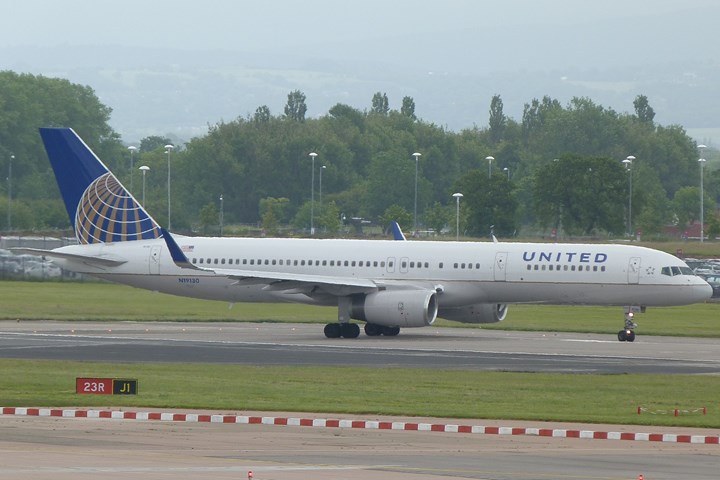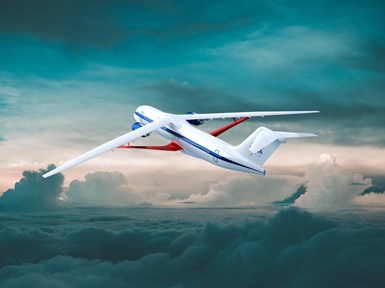Aviation Week survey shows airlines want Boeing to develop modern 757 replacement
Need for long-hauler with up to 250 seats and 20% cost reduction could open door for composites. Boeing is already preparing via new digital engineering chief and integrated product team.

Boeing 757-200. Photo Credit: Craig Sunter, Wikimedia Commons
“Just do it.” This is the answer airlines would give if asked whether Boeing (Chicago, Ill., U.S.) should launch a new narrowbody aircraft, reports Jens Flottau and Guy Norris in a . This answer, they say, is based on a recently published survey conducted by the Aviation Week Network in collaboration with Bank of America Global Research. The poll of more than 900 respondents includes a large number of airlines and lessors. Key findings include:
- Customers see need for up to 250 seats and long-haul capabilities.
- Most respondents would consider a small widebody.
- Boeing should target up to 20% unit-cost reduction.
The article notes that although details have leaked from Boeing’s late-2020 study of the new mid-market airplane (NMA)-derived -5X concept to potentially fill the 757-replacement niche and counter the Airbus A321XLR, Boeing has since retrenched to focus on 787 deliveries and certifying the 777X. It goes on to point out “lower-level preparations for the launch of new products quietly continue in the background while Boeing assesses market timing and opportunities.” These measures, Flottau and Norris report, “range from establishing teams to develop new technology flight decks and other systems to forming an integrated product team [IPT] to pave the way digitally for the design and production of its next commercial aircraft using capabilities and methods largely perfected on a recent set of military programs.” (See “Boeing to build new factory to produce MQ-25 Stingray.”)

An artist’s concept of the transonic truss-braced wing aircraft configuration to be developed through the Sustainable Flight National Partnership (SFNP). Photo Credit: NASA
The Aviation Week article also reports: “Boeing is polling industry for potential input to support its proposal to NASA for a new single-aisle . A competitive program, which will likely be the largest purpose-built experimental aircraft in the seven-decade X-plane series, the new aircraft will form the core of NASA’s Sustainable Flight National Partnership (SFNP) plan with other agencies, industry and academia.”
Whether Boeing proceeds with a double- or single-aisle is important for composites because the former will almost certainly move toward a composites fuselage, following on from those used in the Boeing 787 and Airbus A350 widebody aircraft. A composites fuselage in a narrowbody, however, is less certain. Composite wings seem more likely regardless of fuselage width. CW has written about this before, in “Wither the commercial aerospace landscape” and “Boeing said to be evaluating new twin-aisle program.” Notably, a asserted that any new aircraft with more than 150 seats launched this decade — for production through the 2030s and into the 2040s — will likely require a new geared turbofan engine; extensive use of composites, especially for the wings; and/or digital design and supply chain management to reduce cycle times, working capital, labor cost and the current heavy use of over-specialized jigs and tooling.
The latter is already well underway via the IPT described above and, as reported by the , Boeing has appointed a digital engineering chief to lead preparations for both the design of its next new commercial jet and the integrated production system that will build it. “This effort will determine the standards and interfaces by which we are linked together with a digital thread through design, test, certification, build and support,” explained a company memo.
Read more about digital thread and Composites 4.0 manufacturing below:
- SAM-XL develops closed-loop manufacturing for composites
- Speeding RTM with heat-flux sensors
- Composites 4.0: Digital transformation, adaptive production, new paradigms
- Digital thread vs. digital twin
- No business case for reteaching robots
- Composites 4.0: Where to start?
Related Content
Al Seer Marine, Abu Dhabi Maritime unveil world’s largest 3D-printed boat
Holding the new Guinness World Record at 11.98 meters, the 3D-printed composite water taxi used a CEAD Flexbot to print two hulls in less than 12 days.
Read MoreNCC receives investment to support next-gen composite wing
The NCC was awarded a £15.8 million U.K. government grant for HRMCap to de-risk, accelerate innovation in high-rate large aerocomposites structure manufacturing.
Read MoreSinonus launches energy-storing carbon fiber
Swedish deep-tech startup Sinonus is launching an energy-storing composite material to produce efficient structural batteries, IoT devices, drones, computers, larger vehicles and airplanes.
Read MoreNatilus announces Horizon blended wing body CFRP aircraft for 200-passenger narrowbody market
Following its Kona cargo aircraft with 460 pre-orders, this larger all-CFRP model responds to airlines’ request to fill Boeing and Airbus gap with 25% less weight, 40% greater capacity and 50% less carbon emissions, to enter service by early 2030s.
Read MoreRead Next
Scaling up, optimizing the flax fiber composite camper
Greenlander’s Sherpa RV cab, which is largely constructed from flax fiber/bio-epoxy sandwich panels, nears commercial production readiness and next-generation scale-up.
Read MoreCeramic matrix composites: Faster, cheaper, higher temperature
New players proliferate, increasing CMC materials and manufacturing capacity, novel processes and automation to meet demand for higher part volumes and performance.
Read MoreNext-gen fan blades: Hybrid twin RTM, printed sensors, laser shock disassembly
MORPHO project demonstrates blade with 20% faster RTM cure cycle, uses AI-based monitoring for improved maintenance/life cycle management and proves laser shock disassembly for recycling.
Read More












